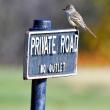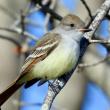A Flycatcher…in Maine…in November?
 A rare ash-throated flycatcher made its way to Maine’s Biddeford Pool over the past week. Courtesy of Weston Barker
A rare ash-throated flycatcher made its way to Maine’s Biddeford Pool over the past week. Courtesy of Weston Barker
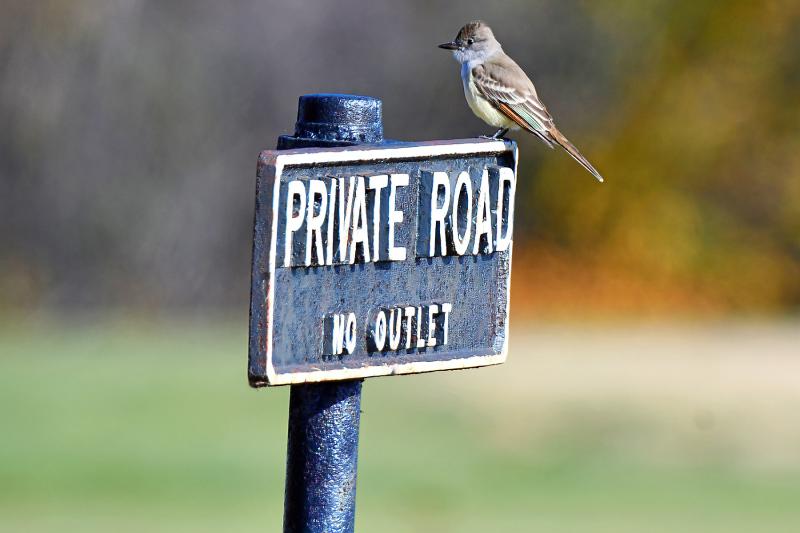 Flycatchers are typically associated with spring and summer here in Maine, since they eat primarily insects. But rare species like this visiting ash-throated flycatcher are prone to show up in the fall. Courtesy of Ethan Whitaker
Flycatchers are typically associated with spring and summer here in Maine, since they eat primarily insects. But rare species like this visiting ash-throated flycatcher are prone to show up in the fall. Courtesy of Ethan Whitaker
 This ash-throated flycatcher in Biddeford Pool, Maine, is a long way from its expected wintering grounds in Mexico. Courtesy of Weston Barker
This ash-throated flycatcher in Biddeford Pool, Maine, is a long way from its expected wintering grounds in Mexico. Courtesy of Weston Barker
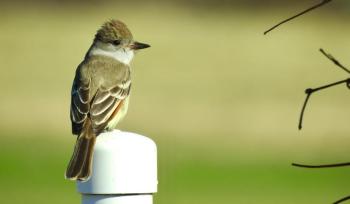 A rare ash-throated flycatcher made its way to Maine’s Biddeford Pool over the past week. Courtesy of Weston Barker
A rare ash-throated flycatcher made its way to Maine’s Biddeford Pool over the past week. Courtesy of Weston Barker
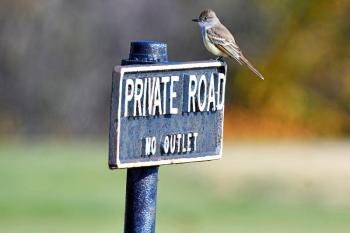 Flycatchers are typically associated with spring and summer here in Maine, since they eat primarily insects. But rare species like this visiting ash-throated flycatcher are prone to show up in the fall. Courtesy of Ethan Whitaker
Flycatchers are typically associated with spring and summer here in Maine, since they eat primarily insects. But rare species like this visiting ash-throated flycatcher are prone to show up in the fall. Courtesy of Ethan Whitaker
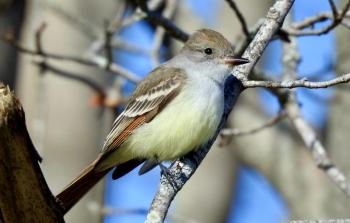 This ash-throated flycatcher in Biddeford Pool, Maine, is a long way from its expected wintering grounds in Mexico. Courtesy of Weston Barker
This ash-throated flycatcher in Biddeford Pool, Maine, is a long way from its expected wintering grounds in Mexico. Courtesy of Weston Barker
Flycatchers are birds of summer. Kingbirds, pewees, great crested, alder, least, and willow flycatchers arrive here in Maine in May and are largely gone by August. There’s good reason for their early departure. Birds that eat flies — well, actually flying insects of all kinds — have a hard time surviving when cold weather descends and bugs are harder to find.
So when a flycatcher is spotted here in Maine in October or November, it’s always a surprise. The surprise is often even greater because flycatchers that show up here at that time of the year seem to more often be some far-flung rarity rather than one of the species that is a regular breeder in Maine.
A good example is the ash-throated flycatcher that has been frequenting a churchyard and neighborhood in Biddeford Pool over the last week. Ash-throated flycatchers are relatives of the great-crested flycatcher, a relatively common breeding bird here in Maine in summer. Ash-throated flycatchers, though, don’t breed anywhere closer than Oklahoma, and even there they typically leave in late summer or early fall for their Mexican wintering grounds.
Yet a scattering of ash-throated flycatchers show up every late fall across the eastern U.S. Here in Maine, there are more than a dozen records, all in the period from September through December. Could it be that these are birds that have been wandering since the beginning of their fall migration back in August? Are they individuals that stayed late in their normal western U.S. breeding range and then, when they departed, went the wrong direction?
It’s a mystery, and the phenomena is not confined to ash-throated flycatchers. Maine’s two records of tropical kingbird are both from October. Almost all of the dozens of western kingbird records in the state are from the period August through December. Two gray kingbird records from Maine are both from October. The single gray flycatcher recorded in Maine was in October, and all of the 14 state records of Say’s phoebe are from September or October.
No doubt the most amazing fall flycatcher to show up in Maine (so far, at least), was a South American bird called the variegated flycatcher that was carefully studied and photographed from November 5-11, 1977, right in Biddeford Pool!
A flycatcher hanging out in Maine in November needs a better strategy as the pickings must be pretty slim even if the bird can find a warm nook with a few flies buzzing around. This one probably won’t be as fortunate as the ash-throated flycatcher that showed up on Thanksgiving Day a few years ago near Belfast that was captured and transported to southern Texas (presumably where it should have been at that time of year). A gray kingbird (an essentially Caribbean species) that delighted birders for a week in early November along Marginal Way in Ogunquit back in 2010 appeared to be getting weaker and then was witnessed being attacked by a Cooper’s hawk. It survived the initial attack but was not seen again after that day. It would seem that that individual needed a better strategy, too.
There is an interesting twist that we haven’t revealed about some of these birds we call “flycatchers.” Ready? Some of them consume fruits during migration and winter! Could that allow some species to survive in places like Maine, at least for a little while, when there are no insects around?
Jeffrey V. Wells, Ph.D., is a Fellow of the Cornell Lab of Ornithology and Vice President of Boreal Conservation for National Audubon. Dr. Wells is one of the nation's leading bird experts and conservation biologists and author of the “Birder’s Conservation Handbook.” His grandfather, the late John Chase, was a columnist for the Boothbay Register for many years. Allison Childs Wells, formerly of the Cornell Lab of Ornithology, is a senior director at the Natural Resources Council of Maine, a nonprofit membership organization working statewide to protect the nature of Maine. Both are widely published natural history writers and are the authors of the popular books, “Maine’s Favorite Birds” (Tilbury House) and “Birds of Aruba, Bonaire, and Curaçao: A Site and Field Guide,” (Cornell University Press).





